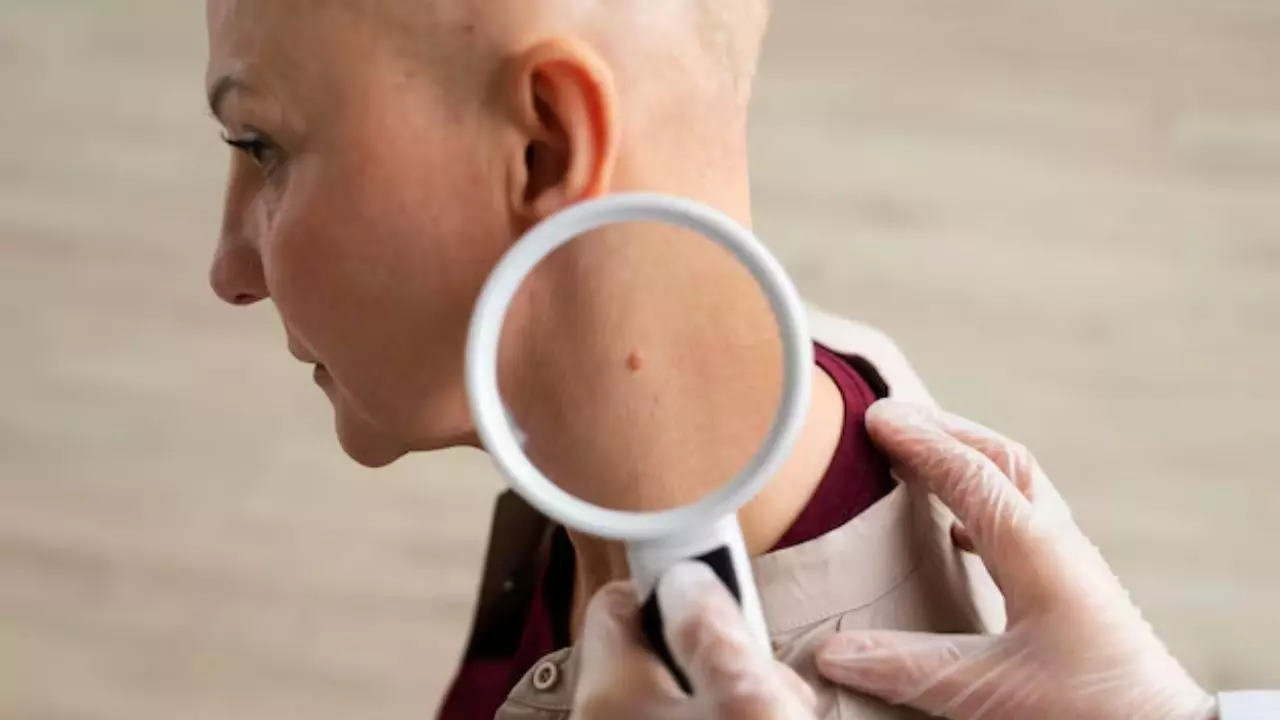
Are skin tags a sign of breast cancer? This is what experts say (Image credit: Freepik)
breast cancer While cancer remains one of the most prevalent forms of cancer affecting women globally, India is witnessing a rapid increase in cases. Breast cancer is now the most common cancer affecting women both worldwide and in India. What is even more worrying is that the number of cases among young women is continuously increasing. In the past, breast cancer was diagnosed primarily in women over the age of 60, but in recent decades, the incidence has increased in women in their 40s or 50s. Factors like genetic predisposition, environmental exposure and lifestyle choices are responsible for this. Contributing to this worrying trend.
Therefore, early detection is essential as it can be life-saving. According to Dr Ashish Gupta, Head of Medical Oncology at Unique Hospital Cancer Centre, breast self-examination (BSE) plays a vital role in detecting the disease at an early stage, which significantly improves treatment outcomes.
“Only three fingers and a mirror are enough to detect the presence of breast cancer,” says Dr. Gupta, an American board-certified oncologist. “By understanding how your breasts normally feel, you can more easily detect changes or abnormalities.”
Dr. Gupta encourages young women to adopt healthy habits in their 20s, such as a balanced diet, regular exercise, and maintaining a healthy body weight. These lifestyle changes can reduce the risk of developing breast cancer later in life.
breast cancer symptoms: What to look for
While a lump in the breast is the most commonly recognized symptom, breast cancer can manifest in a number of ways. Dr. Gupta recommends paying attention to the following warning signs:
– Lumps in the breast or underarms: A new lump or mass is one of the most common symptoms. A hard lump, irregular in shape and painless, may cause concern, although some lumps may be tender or painful.
– Nipple changes or discharge: Changes in the nipple, such as inversion, pain, or unusual discharge (especially if bloody or greenish), may be indicators of breast cancer.
Thickening or dimpling of the skin: Sometimes the skin over the breast may thicken or develop an “orange peel”-like texture, which may be a sign of underlying cancer.
– Cysts or changes in the size or shape of the breast: Any visible change in the size or shape of the breast, especially if accompanied by pain or discomfort, should be evaluated by a medical professional.
Dr. Gupta emphasizes that although these symptoms do not always indicate cancer, they require immediate medical attention for further evaluation and testing.
How can early detection save lives?
One of the major challenges in breast cancer is that it often causes no pain in the early stages, leading to delayed diagnosis. “Many women find out only after their cancer has progressed, when treatment options become more aggressive and less effective,” explains Dr. Gupta. However, when detected early, the success rate of treatment increases. He further said, “If detected early, the chance of cure can be 90 to 95 percent.”
In the early stages, cancerous lumps are usually small, allowing less invasive treatment. Techniques such as breast conservation, oncoplasty (reconstructive surgery), and sentinel lymph node biopsy can be employed, saving women from more invasive procedures such as full mastectomy.
Dr. Gupta also emphasizes the need for regular medical checkups like mammograms, especially for women above 40 or those who have a family history of breast cancer. However, along with professional checkups, monthly self-examination can also play an equally important role in catching the disease early.
A common concern among women is whether skin tags could be an early sign of breast cancer. Skin tags are benign (noncancerous) growths that often appear on the skin, especially in areas where there is friction, such as the neck, armpits, or under the breasts. Although they can be troublesome, skin tags are not linked to breast cancer. According to Dr. Gupta, there is no scientific evidence linking skin tags to breast cancer or any other type of deadly disease.
However, if a skin tag or any other skin abnormality appears near the breast, grows rapidly, or becomes painful, it is important to consult a health professional for a thorough evaluation. Any skin change directly on the breast, such as a dimpling or redness, may be a sign of inflammatory breast cancer, a rare but aggressive form of the disease.
Why are self-examinations important?
Dr. Gupta explains, “Breast self-examination should be a regular practice for all women. By familiarizing yourself with the normal look and feel of your breasts, you can detect abnormalities early and seek medical advice promptly. The process is simple and takes just a few minutes each month.”
Get the latest news live on Times Now with breaking news and top headlines from around the world.



